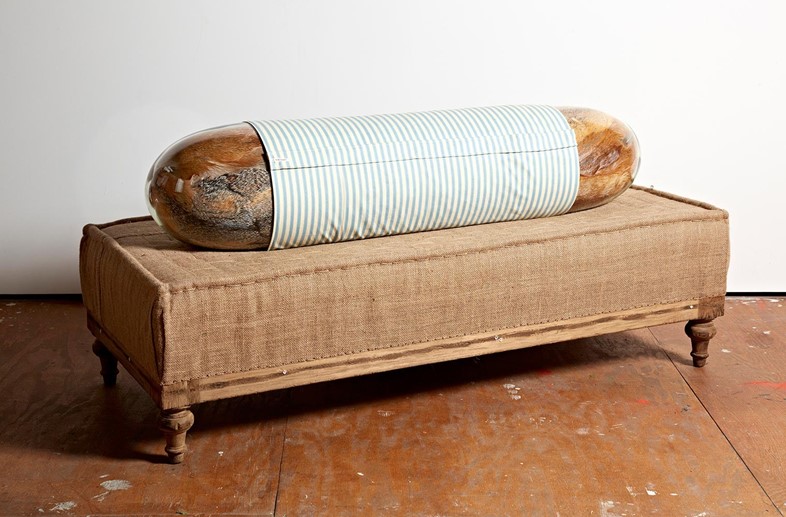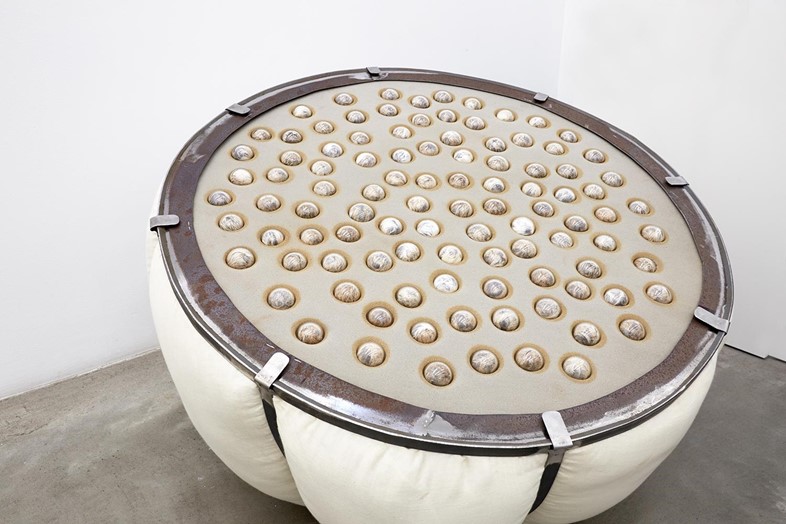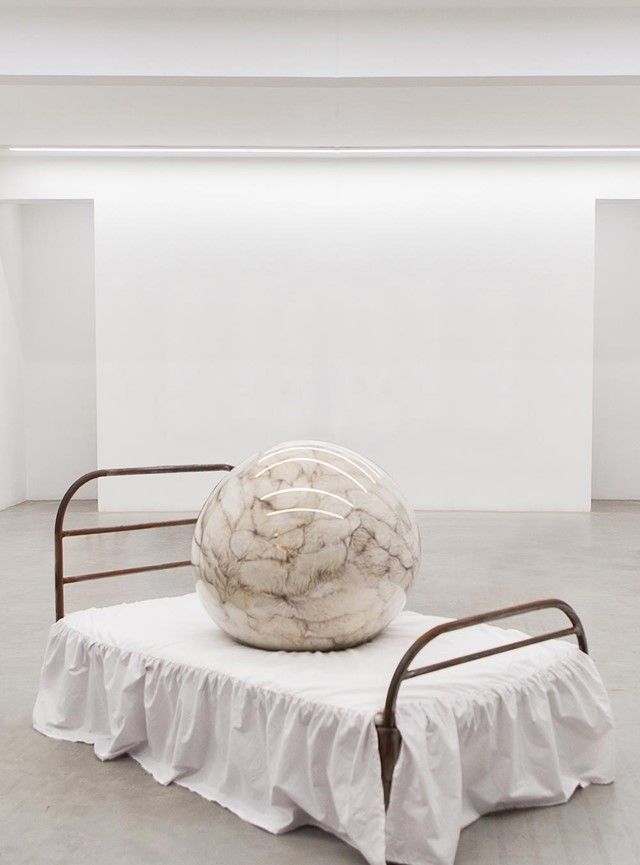The Dutch-Monegasque artist who specialises in anthropomorphising hunks of glass tells AnOther about her latest works
Dutch-Monegasque artist Adeline de Monseignat specialises in creating work which straddles the uncanny, the alluring and the utterly strange. Monseignat is currently based in London, where her inclusion in the Saatchi Gallery’s UK/RAINE exhibition, which is designed to support emerging artists from the UK and Ukraine, is just one of many recent triumphs. The artist’s bold, sculptural works have been included in numerous shows this year, at institutions from the Ronchini Gallery, which represents her, to the Cob Gallery and Art Brussels, and the fervour doesn’t show any sign of slowing.
The most powerful ideas circulating in her practice are those which produce her ‘creaptures’ – hybrid creature-sculptures whose physical appearance and uncomfortable symbolic potential both attract and repel viewers in equal measure. Silently seductive and tantalising in their tactility, Adeline’s glass spheres, each filled with vintage fur, are incredibly intriguing: such ‘creaptures’ operate in the interstices between the animate and inanimate, neither fully subject nor object. They provoke in the viewer a sense of radical uncertainty, and in some cases, insecurity, concerning the distinctions between being alive and being dead, Adeline’s creaptures seem to inhabit the eternal interim between life and death. Lonely Loleta is the most ambitious of such ‘creaptures’, concealing as it does a kinetic element, or small motor, meaning that she/it appears to be breathing. Subtle and yet unmistakable, such movement arouses in the viewer a kind of visceral thrill.

On ‘the essence’ of her work…
“I investigate ways in which inanimate objects can trigger emotional responses, and even hold a sense of presence and life. I thus attempt to inject 'life' into my creations by giving them a body, a soul and a story. My creature-sculptures share a common triple-stranded DNA: The uncanny, the origin, and the contact.”
On her sources of inspiration…
“You; him; her; them. Life; sex; birth; death; feelings and sensations – what thinkers say about all of that, what writers imagine these could involve, how artists translate these into materials, how materials make us feel… I base a lot of my research on texts, both fictional – for example Le Petit Prince, The Sandman, The Yellow Wallpaper, and psychoanalytical – Freud’s The Uncanny, Winnicott’s Playing and Reality. These are my ideal sources of inspiration.”

On the importance of The Uncanny in her work…
“By combining familiar elements in unfamiliar and contradictory scenarios and environments, I explore the weird and unnatural through the notion of the uncanny: the familiar yet strange. My works are liminal, hovering on the border between our conscious and unconscious minds, unsettling yet not directly threatening because I incorporate characteristics that can be found in the familiar and seemingly harmless. My work possesses a mesmerizing quality rooted in psychological states; I hope that when confronted by my work the viewer experiences a sensorial displacement that is both playful and profound.”
UK/Raine runs until January 3 at the Saatchi Gallery, London.
